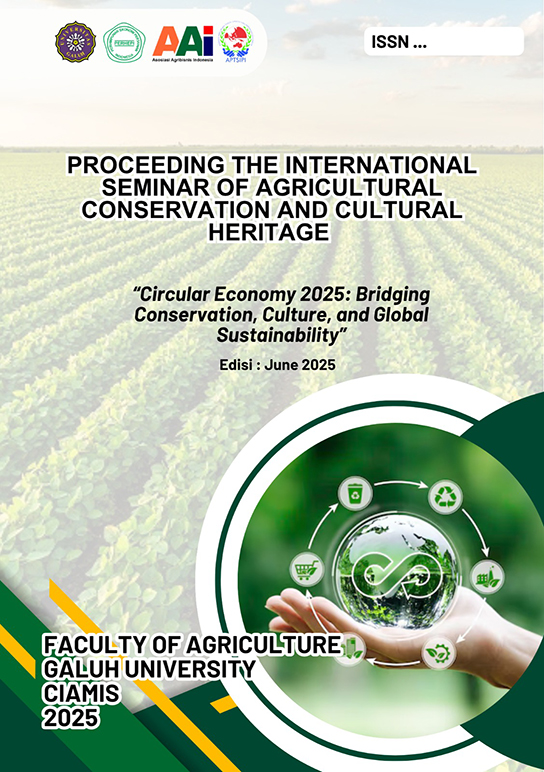STRUCTURAL ECONOMIC STUDY OF BALI PROVINCE THROUGH SHIFT SHARE METHOD AND KLASSEN TYPOLOGY
Abstract
This study aims to analyze the dynamics of growth and economic structure between regions in Bali Province using the Shift Share Analysis, Klassen Typology, and Williamson Index approaches. The Shift Share method is used to evaluate the contribution of national growth, the influence of industrial mix (proportional shift), and competitive advantage (differential shift) on changes in economic sectors in districts/cities in Bali. The Klassen Typology is applied to classify economic sectors into four categories: advanced and rapidly growing sectors, advanced but constrained sectors, potential sectors, and lagging sectors. The analysis reveals that there are consistent leading sectors supporting regional economic growth, such as the public administration sector, other services, and agriculture. However, the Williamson Index of 0.40 indicates that there is still moderate economic development disparity between regions in Bali. This disparity is generally driven by the concentration of development in areas dominated by the tourism and service industries. This study suggests the need for a more equitable and sustainable development strategy, focusing on the development of potential sectors and enhancing the competitiveness of strategic sectors across all districts/cities in Bali Province.
References
Armstrong, H., & Taylor, J. (2000). Regional Economics and Policy (3rd ed.). Blackwell Publishing.
Barro, R. J., & Sala-i-Martin, X. (2004). Economic Growth (2nd ed.). MIT Press.
Blanchard, O., & Katz, L. F. (1992). Regional Evolutions. Brookings Papers on Economic Activity, 1992(1), 1–75.
Bojnec, Š., & Fertő, I. (2014). Export competitiveness of dairy products on global markets: The case of the European Union countries. Journal of Dairy Science, 97(10), 6151–6163. https://doi.org/10.3168/jds.2014-8286
Dinc, M. (2019). Introduction to Regional Economic Development (2nd ed.). Routledge.
Esteban, J. (2000). Regional convergence in Europe and the industry mix: A shift–share analysis. Regional Science and Urban Economics, 30(3), 353–364. https://doi.org/10.1016/S0166-0462(00)00048-3
Faggian, A., McCann, P., & Sheppard, S. (2007). Human capital, higher education and graduate migration: An analysis of Scottish and Welsh students. Urban Studies, 44(13), 2511–2528.
Friedman, J. (1966). Regional Development Policy: A Case Study of Venezuela. MIT Press.
Ghosh, B. N. (2016). Regional Development and Planning in India. Taylor & Francis.
Krugman, P. (1991). Increasing returns and economic geography. Journal of Political Economy, 99(3), 483–499.
Loveridge, S., & Nizalov, D. (2007). Operationalizing the Economic Base Model for Extension and Research. Review of Regional Studies, 37(1), 5–20.
Molle, W. (2007). European Cohesion Policy. Routledge.
Partridge, M. D., & Rickman, D. S. (2008). Place-based policy and rural U.S. economic development. Applied Economic Perspectives and Policy, 30(4), 528–544.
Richardson, H. W. (1973). Regional Growth Theory. Macmillan.
Williamson, J. G. (1965). Regional Inequality and the Process of National Development: A Description of the Patterns. Economic Development and Cultural Change, 13(4, Part 2), 1–84.
Nazara, S. (2000). Pengantar Analisis Regional dengan Pendekatan Shift-Share. Lembaga Demografi FEUI.
Richardson, H. W. (1995). Economic and social issues of sustainable development in developing countries. Geoforum, 26(1), 53–64. https://doi.org/10.1016/0016-7185(95)00013-W
Hansen, N. M. (1969). Regionalism and Regional Policy. Journal of Regional Science, 9(1), 77–90.
Isard, W. (1975). Introduction to Regional Science. Prentice-Hall.
Borts, G. H., & Stein, J. L. (1964). Economic Growth in a Free Market. Columbia University Press.
McCann, P. (2001). Urban and Regional Economics. Oxford University Press.
Myrdal, G. (1957). Economic Theory and Underdeveloped Regions. Duckworth.
Perroux, F. (1950). Economic Space: Theory and Applications. Quarterly Journal of Economics, 64(1), 89–104.
Storper, M. (2013). Keys to the City: How Economics, Institutions, Social Interaction, and Politics Shape Development. Princeton University Press.
Higgins, B., & Savoie, D. J. (1997). Regional Development Theories and Their Application. Transaction Publishers.
Yudha, Eka Purna, et al. "Rural development policy and strategy in the rural autonomy era. Case study of Pandeglang Regency-Indonesia." Human Geographies 14.1 (2020): 125-147.
Yudha, Eka Purna, and Resa Ana Dina. "Pengembangan potensi wilayah kawasan perbatasan negara Indonesia (studi kasus: Ranai-Natuna)." Tata Loka 22 (2020): 366-378
Hasanah, Faujatul, et al. "Analisis Potensi Sektor Unggulan Dan Perubahan Struktur Ekonomi Di Kabupaten Serang Provinsi Banten Analysis Of Potential Leading Sectors And Changes In Economic Structure In Serang Regency Of Banten Province." Jurnal Pemikiran Masyarakat Ilmiah Berwawasan Agribisnis. Januari 7.1 (2021): 947-960
Yudha, E. P., & Roche, J. (2023). How Was the Staple Food Supply Chain in Indonesia Affected by COVID-19?. Economies, 11(12), 292.
Yudha EP, Syamsiyah N, Pardian P, Dina RA. Rural areas are more resilient than urban areas to the COVID19 pandemic. Is it true? (Lessons from Indonesia). Human Geographies – Journal of Studies and Research in Human Geography. Vol. 17, No. 2, 2023, 171-192


